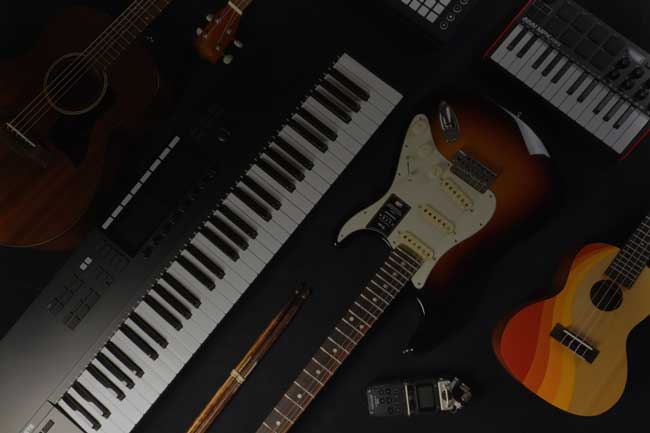- Catalog #: RND-5211
5211
2 Channel Microphone Preamp
Simple and elegant, the 5211 is the natural evolution of what is arguably the most famous gear in audio recording history: Rupert Neve’s microphone preamps.
With two channels of the classic tone you know and love, 72dB of gain, sweepable high-pass filters for precise control, and the power of Mr. Rupert Neve’s dual-tap transformers with variable Silk saturation, the 5211 delivers a versatile, flattering, and uncompromising front end for any signal path. In short, it’s everything a mic preamp should be.
What is Silk?
One of the key features of the 5211 is the Silk / Texture control. The Silk circuit was initially developed for the original Portico series mic preamplifiers, and was only a single switch – on or off – that added a specified amount of musical, pleasing harmonic saturation to the unit’s output stage.
Taking this concept one step further, the Texture knob is designed to adjust the actual amount of harmonic content from the source material.
So how does it work? By reducing negative feedback across the output transformer and adjusting this feedback’s frequency response, the Silk / Texture circuit provides the sweet, musical saturation found in Rupert’s legendary vintage designs – but with complete & precise control over the amount of classic tone you want. And when the level is driven to the edge of its headroom, the Silk effect is multiplied.
Custom Transformer Outputs
The 5211 has a custom transformer output stage with a balanced main standard line level output. Additionally, a separate -6dBu XLR output can compensate for high levels of input and Silk harmonic saturation, enabling engineers to fully drive the 5211 to achieve more transformer harmonics without clipping the next device in the chain. Both outputs are active and can be used concurrently.
Features
- MIC GAIN
- A 12-way precision rotary switch controls gain from 0 to 66 dB in 6 dB steps.
- TRIM
- Continuously variable +/-6 dB level control.
- SILK / TEXTURE
- Pushing the Silk button engages the Red Silk circuit, which reduces the negative feedback on the output transformer, adding harmonic content as the texture is increased. Red Silk accentuates the saturation in the mid and high frequencies, similar to that of the Red Silk mode on the Shelford Channel. By manipulating the Texture control, the amount of Silk can be changed from essentially absent, to roughly 10 times the amount of coloration / distortion found in Silk from the original Portico Series. With Silk / Texture engaged, the distortion characteristic and harmonic content of the unit are very reminiscent of many of Rupert’s vintage class-A designs.
- Level Meter
- An eight-segment LED bar-graph meter displays output level (pre-Silk) from -10 dBu to +22 dBu.
- Polarity
- Reverses the polarity of the input signal.
- High Pass Filter
- Continuously variable from 20Hz to 250 Hz, and engaged with the HPF button.
- Phantom Power
- Provides 48V phantom power to microphones.
- MAIN OUT
- Balanced XLR output utilizing a custom Rupert Neve Designs transformer.
- -6dB Output
- Balanced XLR output utilizing a lower level, secondary output on the custom Rupert Neve Designs transformer.
Specifications
- MAXIMUM INPUT LEVEL
- @ 1 kHz: +26 dBu
- NOISE
- Un-weighted, 22 Hz - 22 kHz, 150 Ohm input termination
- Line Out (Unity Gain): -104 dBV, -101.9 dBu
- -6 dB Line Out (Unity Gain): -109 dBV, -107 dBu
- Line Out (+30 dB Gain): -98 dBV, -96 dBu
- Line Out (+66 dB Gain): -66 dBV, -64 dBu
- EQUIVALENT INPUT NOISE (EIN)
- -128 dBV, -126 dBu
- FREQUENCY RESPONSE
- -0.2 dB at 10Hz, -2.9 dB at 120kHz
- MAXIMUM OUTPUT LEVEL
- 1 kHz: +26.5 dBu
- 20 Hz to 30kHz +26 dBu
- TOTAL HARMONIC DISTORTION AND NOISE (WITHOUT SILK)
- 1 kHz, +20 dBu O/P level, no load 0.0015%, typical
- 20 Hz, +20 dBu O/P level, no load less than 0.02%, typical
- TOTAL HARMONIC DISTORTION AND NOISE (WITH SILK ENGAGED)
- TEXTURE @ min, 100 Hz, +20 dBu O/P level, no load: 0.03%, mostly 3rd harmonic
- TEXTURE @ max, 100 Hz, +20 dBu O/P level, no load: 1.5%, mostly 2nd harmonic
- POWER CONSUMPTION
- 35 W (Max)'
- PRODUCT DIMENSIONS
- 19” W x 1.75” H x 7 ⅝” D






